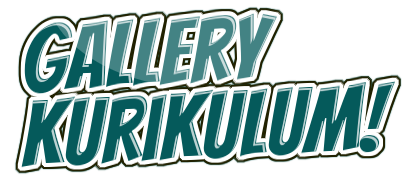Introduction
What is Cedar Siding?
Cedar siding is a popular natural wood siding option known for its aesthetic appeal and durability. It is commonly used in residential and commercial buildings, providing a rustic and timeless charm that enhances curb appeal.
Why Homeowners Choose Cedar Siding?
Many homeowners opt for cedar siding due to its natural beauty, eco-friendliness, and excellent insulation properties. However, like any material, it has its advantages and disadvantages.
Pros of Cedar Siding
Natural Beauty and Aesthetic Appeal
Cedar siding offers a unique and rich wood grain texture that adds warmth and elegance to any home. Its natural appearance can be enhanced with stains and finishes to match various architectural styles.
Eco-Friendly and Sustainable Material
Cedar is a renewable resource, making it an environmentally friendly choice. It requires minimal processing and is biodegradable, reducing its environmental impact compared to synthetic siding materials.
Durability and Longevity
When properly maintained, cedar siding can last for decades. It is naturally resistant to decay and weather conditions, making it a durable option for many homeowners.
Excellent Insulation Properties
Cedar provides natural thermal insulation, helping to keep homes warm in winter and cool in summer. This energy-efficient property can contribute to reduced heating and cooling costs.
Easy to Paint or Stain
Unlike some synthetic materials, cedar siding readily absorbs paint and stain, allowing homeowners to customize its appearance over time.
Lightweight and Easy to Install
Compared to heavier siding materials like stone or brick, cedar is lightweight and easier to install, reducing labor costs and installation time.
Resistant to Rot and Insects (With Proper Treatment)
Cedar contains natural oils that deter some insects and fungi. However, it requires proper treatment to enhance its resistance to rot and pests over time.
Cons of Cedar Siding
High Maintenance Requirements
Cedar siding demands regular maintenance, including sealing, staining, and painting, to maintain its appearance and protect it from the elements.
Vulnerability to Moisture and Rot (If Not Maintained)
Without proper sealing and upkeep, cedar siding can absorb moisture, leading to rot, mold, and mildew growth.
Higher Initial Cost Compared to Other Siding Materials
Cedar siding is more expensive than vinyl or fiber cement siding, making it a significant investment for homeowners.
Susceptibility to Pests and Termites Without Proper Treatment
While cedar has some natural resistance, it is still prone to termite infestations if not treated correctly.
Potential for Fading and Discoloration Over Time
Exposure to sunlight and weather conditions can cause cedar siding to fade or turn gray, requiring re-staining or sealing to maintain its original color.
Fire Hazard Concerns
Being a wood product, cedar siding is more flammable than other materials, requiring fire-retardant treatments in some areas with strict building codes.
Comparing Cedar Siding to Other Siding Materials
Cedar vs. Vinyl Siding
- Vinyl siding is cheaper and lower maintenance but lacks the natural look of cedar.
- Cedar is more eco-friendly but requires regular upkeep.
Cedar vs. Fiber Cement Siding
- Fiber cement siding is more resistant to fire and pests.
- Cedar offers superior insulation and a more natural aesthetic.
Cedar vs. Aluminum Siding
- Aluminum is highly durable and requires minimal maintenance.
- Cedar provides better insulation and a traditional wood look.
Tips for Maintaining Cedar Siding
Regular Cleaning and Inspection
Washing cedar siding with mild detergent and water helps prevent mold buildup. Regular inspections allow for early detection of damage.
Proper Sealing and Staining
Applying a quality sealant or stain every few years protects cedar from moisture and UV damage.
Addressing Mold and Mildew Issues
Ensure proper ventilation and remove any mildew promptly to prevent structural damage.
Preventing Pest Infestations
Use pest-resistant treatments and keep the siding dry to avoid attracting termites and insects.
Conclusion
Cedar siding is a beautiful, durable, and eco-friendly choice for homeowners who appreciate natural aesthetics and insulation benefits. However, it requires regular maintenance and comes with a higher upfront cost. By understanding the pros and cons, you can determine if cedar siding is the right option for your home.
FAQs
Is cedar siding worth the investment?
Yes, if you value aesthetics, insulation, and sustainability. However, be prepared for higher maintenance costs.
How often should cedar siding be maintained?
Cedar siding should be cleaned and inspected annually, with staining or sealing recommended every 3-5 years.
Can I install cedar siding myself?
Yes, if you have basic carpentry skills. However, hiring a professional ensures proper installation.
Does cedar siding require sealing or staining?
Yes, sealing or staining helps protect against moisture, UV damage, and pests.
How does cedar siding hold up in different climates?
Cedar performs well in most climates but requires more maintenance in humid or extreme weather conditions.
